👋 Are you coming to Lyon? What a fantastic idea!
Take the opportunity of a weekend to hop on a train and visit Romain. It's only 2 hours by high-speed train from Paris, and slightly more than 3.5 hours from Lille.
Sign inNo idea of what to visit when you'll arrive?
There's plenty to see there.
Fourvière Basilica, get a quick grasp of the city’s history.
Built straight after the franco-prussian war of 1870 by architects Bossan and Sainte-Marie Perrin, Fourvière is the kind of basilica that will leave you stunned with all its mosaics. It’ll stun you as well thanks to a 360° view of the metropolis. It stands firmly in front of view as soon as you get out of the funicular and beyond a quick tour of the main chapels, you’ll appreciate a guided tour by one of the 300 volunteers of the Fourvière foundation. During summertime, you’ll favour the 11hr-slot before the heat wave strikes the city.
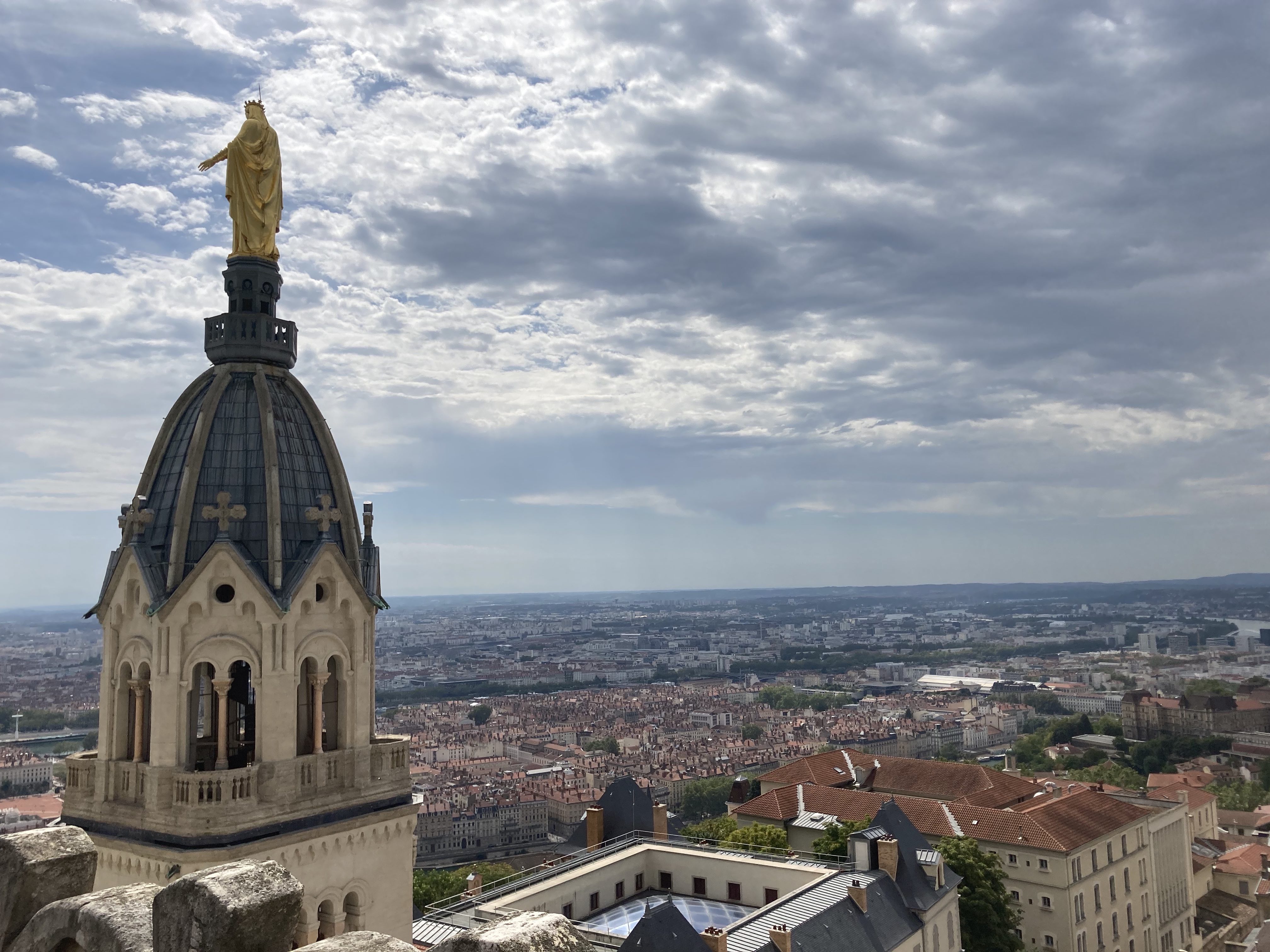
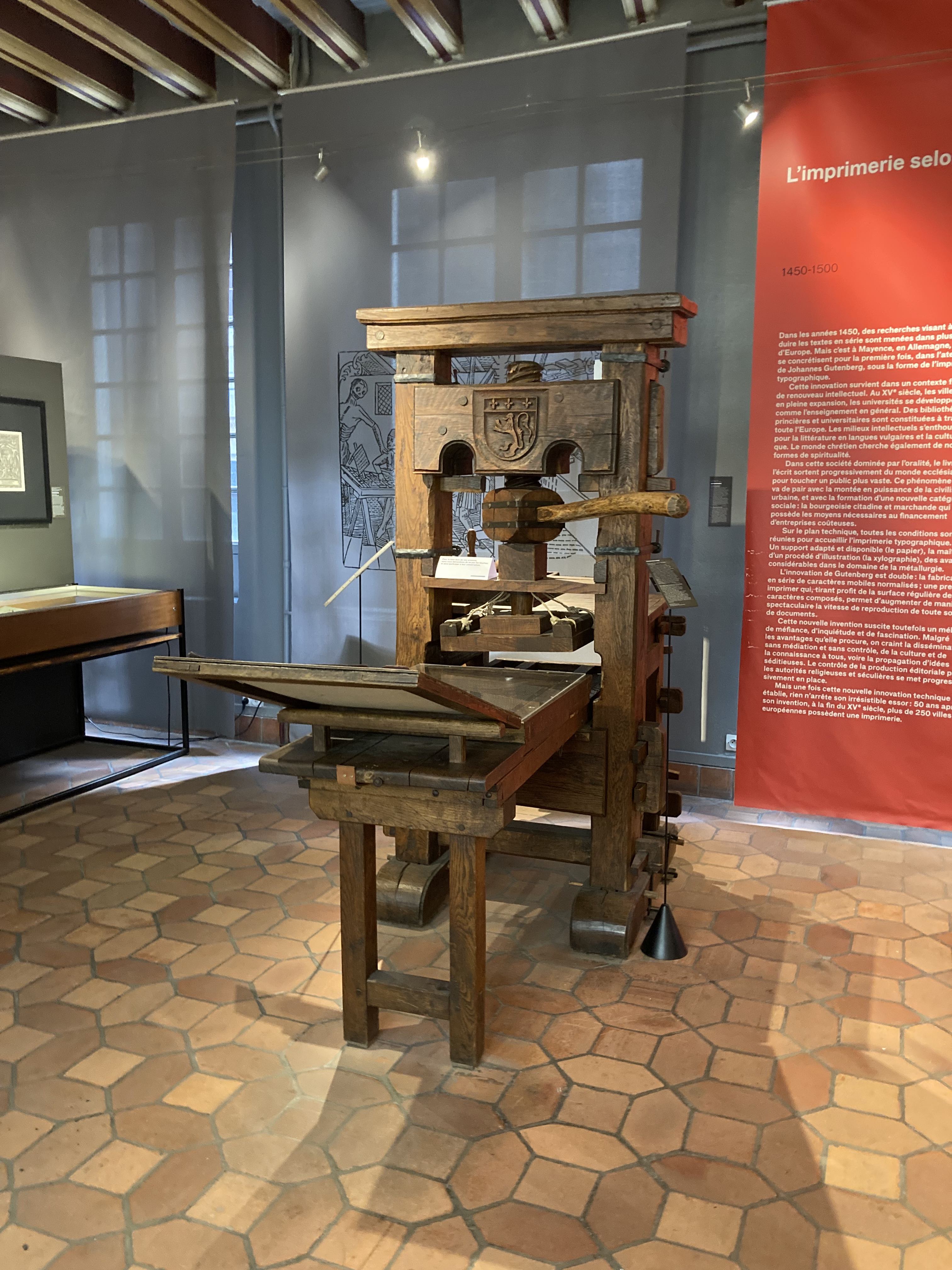
The Printing and Graphic Arts Museum.
You’ll find there the second oldest printing press still on display. During the Renaissance period, Lyon was an important hub for printing, not far from Paris, close to Central Europe. All the stages of printing, from monks manually writing books to Adobe Illustrator, are depicted. We appreciate the original copper plates from the XVIIth century that show a map of the city back then: you can appreciate the transformation if endured: the meeting point of the rivers Saône and Rhône moved 2km south, the development of the Rhône’s left bank.
Wander in the Old Town and circle back through the peninsula.
Lyon has 10% of its surface classified as a World Heritage Site, covering the Old Lyon dating back from the Renaissance era and its peninsula with buildings from the XVIII and XIXth centuries. You’ll roam around rue Saint-Jean without stopping at the tourist traps disseminated alongside the street. We’ll walk the peninsula southwards from Terreaux Square. Terreaux as it sits above a former canal that used to join the rivers Saône and Rhône, and this canal got filled, with some ground, terre in French. You’ll find the main Town Hall sitting in front of the square redesigned by Daniel Buren. A fountain designed by Bartholdi also sits there, but it was initially designed for Bordeaux, who couldn’t afford it! You’ll walk in front of the Opera redesigned by Jean Nouvel before walking towards Jacobins Square and Bellecour Square, the largest in Europe! To become a nerd about Lyon’s history, you’ll add a stop at the Musée de l’Histoire de Lyon, on Gadagne street.
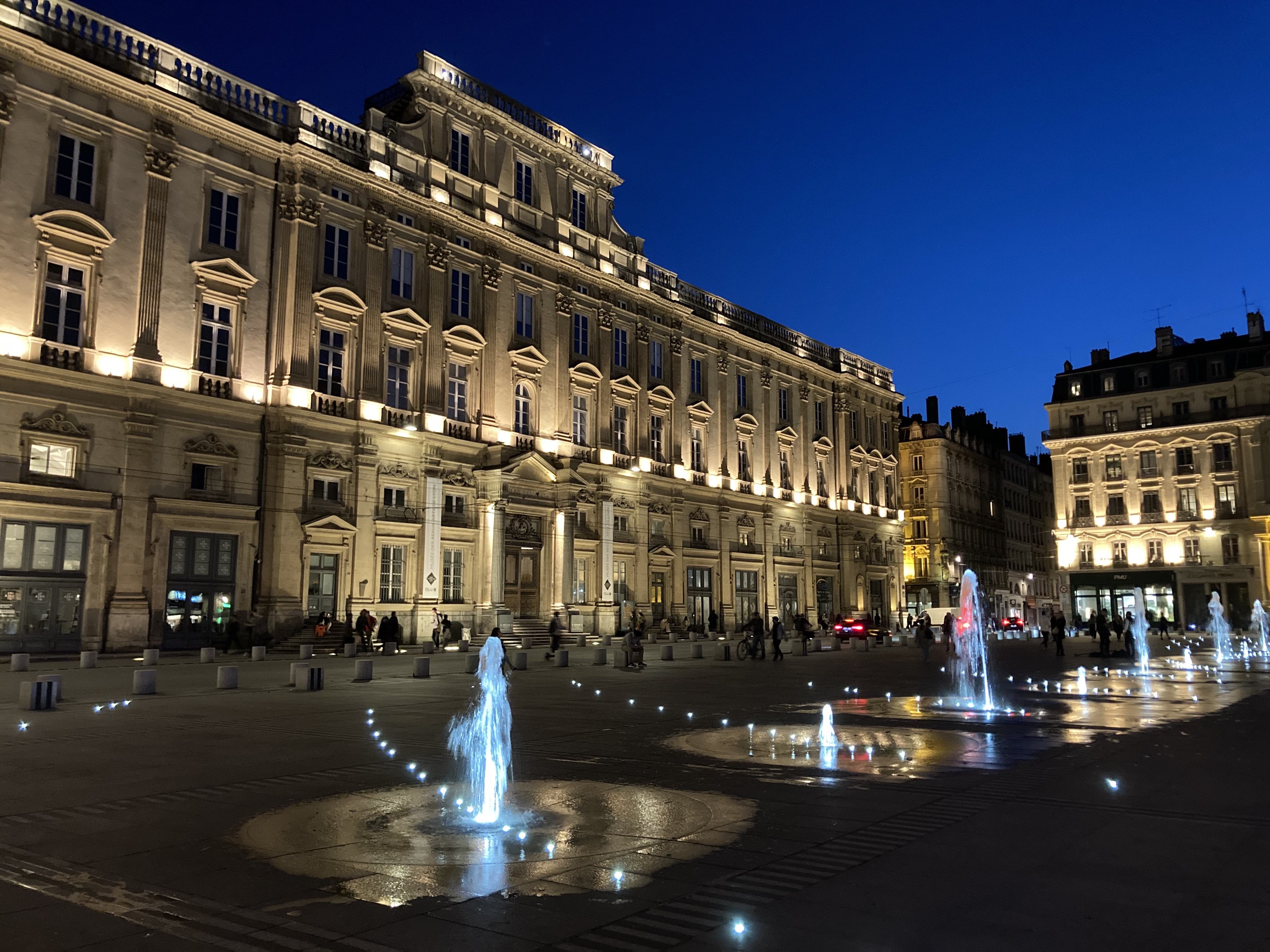
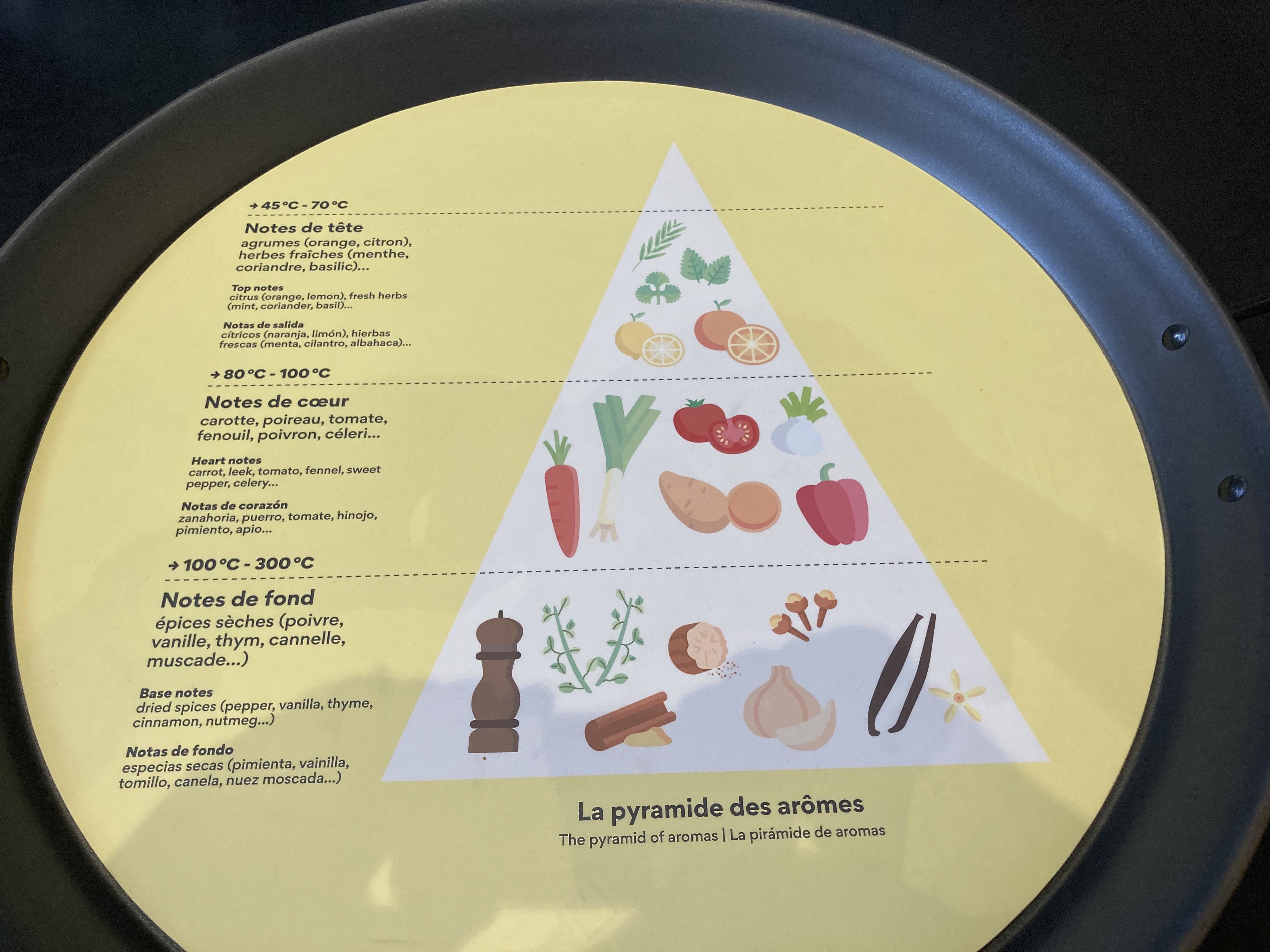
Eat and learn on how to eat, bouchons lyonnais and Cité internationale de la gastronomie.
Bouchons, breweries, Lyon is all about food, and the numerous restaurants on Mercière street and the bouchons all around town won’t tell the opposite. We’ll most likely head out to the Comptoir Brunet on Claudia Street, the Brasserie Georges on Verdun Perrache Court and Culina Hortus on Arbre Sec Street. To quench your thirst of knowledge about food, head to the Hôtel Dieu to visit the Cité internationale de la gastronomie. A former hospital, the premises got transformed in a palace and luxury stores (Habitat, Citadium Silvera…).
Croix-Rousse, the hill that works.
If Fourvière is the colline that prays, Croix—Rousse used to be the one that tirelessly worked. Separate city from Lyon before its merger mid XIX-th century, Croix-Rousse was home to the canuts, these workshop managers that sew silk for soyeux that took in charge selling the drapes to the rich customers, church or state. Do you know that Napoléon the first issued a law that required civil servants to dress in silk for work and renew their wardrobe on a regular basis? You’ll see the Fresque des Canuts, a 1200m2 wall painting initiated in 1987. If you head to La maison des canuts, you’ll have the chance to see a working Jacquard loom.
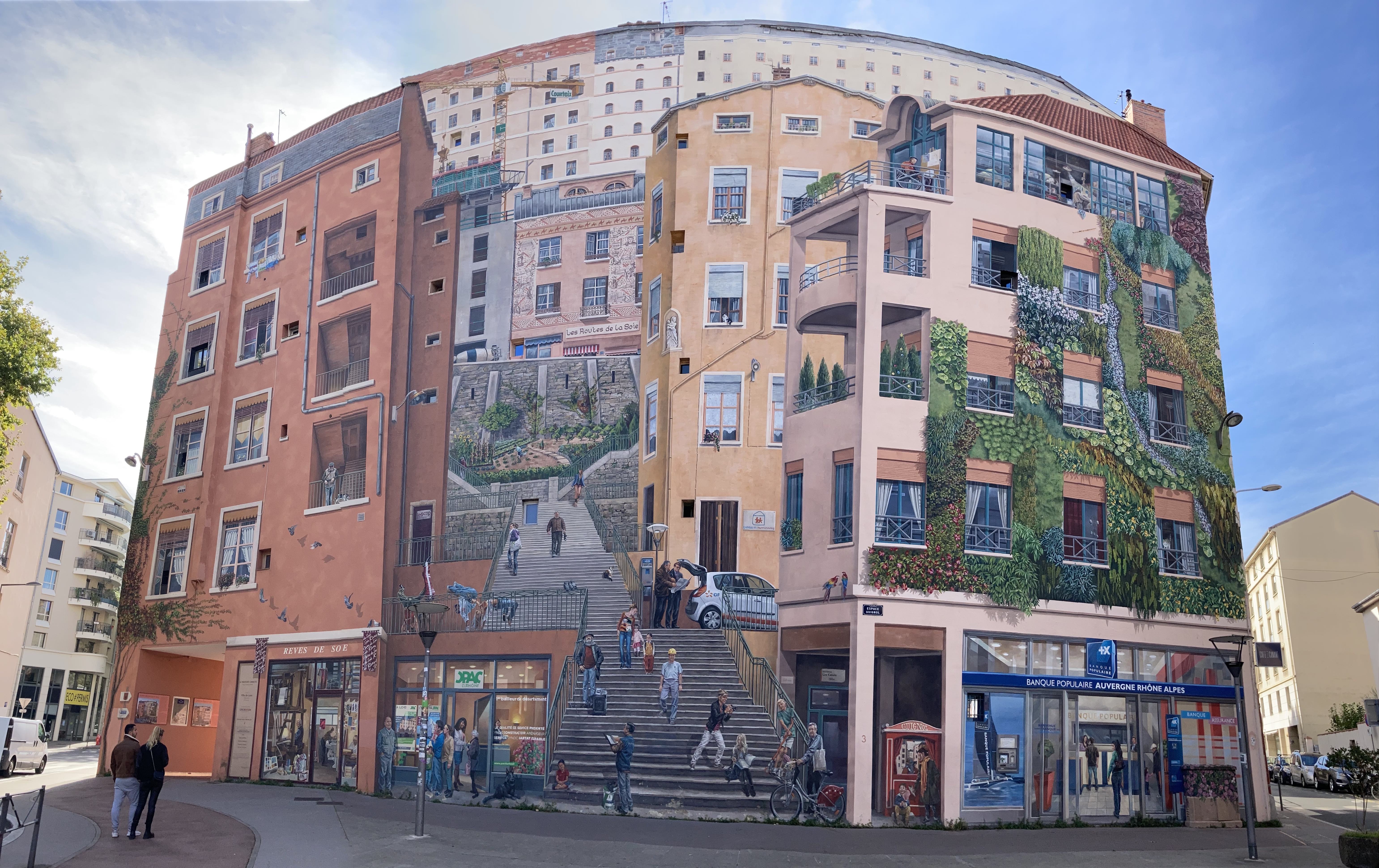
How far away are all these things?
Roaming around the city by foot is really convenient as everyting is at most 20 minutes away by public transportation from home. To get to Croix-Rousse, you'll have the chance to hop on metro line C, the only rack-railway metro line in the world!